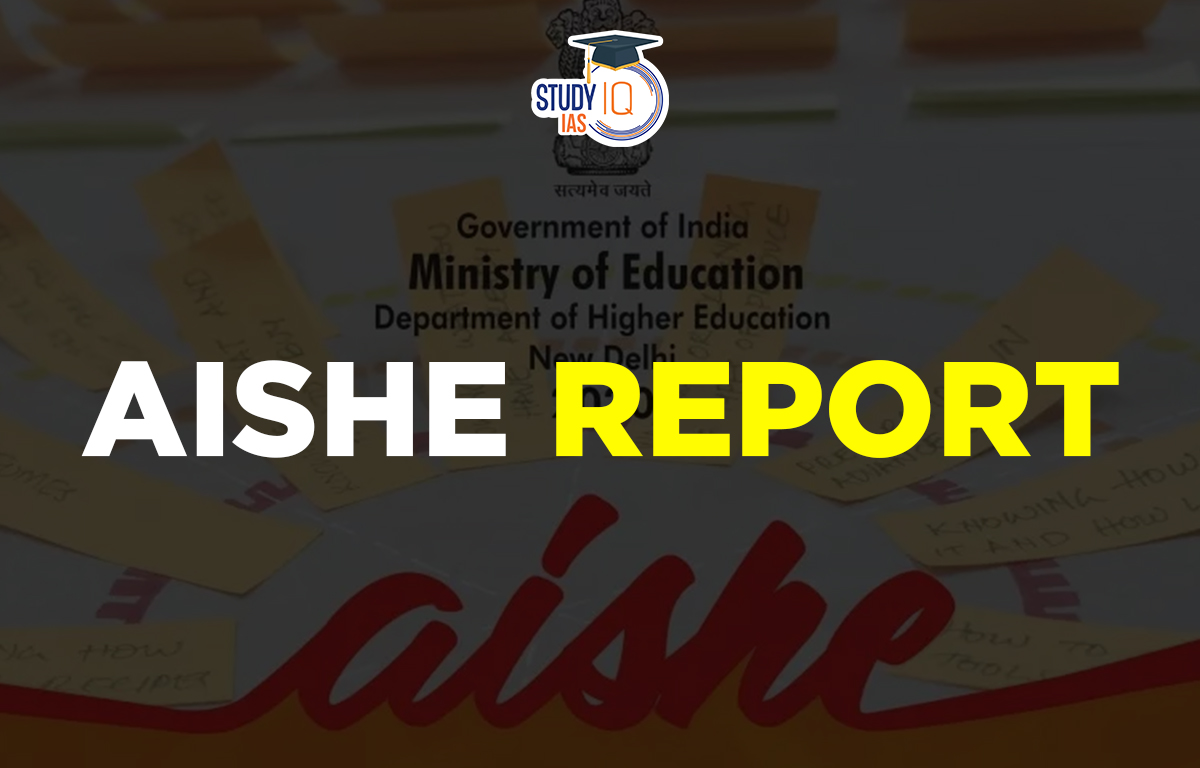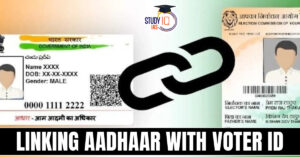Table of Contents
Context: Recently, the Union Ministry of Education released data on the All India Survey on Higher Education (AISHE), 2020-2021.
Highlight of AISHE Report
- Enrolment: Total student enrolments in higher education increased to nearly 4.13 crore in 2020-21 from 3.85 crore in 2019-20.
- India witnessed 7.5% increase in student enrolments across the country compared to 2019-20.
- Since 2014-15, there has been an increase of around 7,200,000 in the enrolment (21%).
- The Gross Enrolment Ratio (GER) in higher education has reached 27.3 per cent. GER is the ratio of 18-23-year-old adults attending college to the total population. It has been calculated according to the 2011 census.

- Gender: The total number of students comprises 51.3 per cent males and 48.7 per cent females.
- Female enrolment in higher education programmes had increased to 49% of total enrolments in 2020-21 compared to 45% the previous year.
- Female enrolment has increased to 2.01 crore from 1.88 crore in 2019-20. There has been an increase of around 44 Lakh (28%) since 2014-15.
- The percentage of female enrolment to total enrolment has increased from 45% in 2014-15 to around 49% in 2020-21.
- Gender Parity Index (GPI) has increased from 1 in 2017-18 to 1.05 in 2020-21
- Categorisation of Student: Of total of 4.14 crore students enrolled in higher education institutions in India in 2020-21:
- 14.2 per cent belong to SC: 2 lakh more SC students got enrolled in 2020-21.
- 5.8 per cent belong to ST: 3 lakh more ST students got enrolled in 2020-21.
- 35.8 per cent belong to OBC: 6 lakh more OBC students got enrolled in 2020-21.
- 44.2 percent belong to other communities.
- Overall enrolment percentage of Scheduled Caste (SC), Scheduled Tribe (ST) and Other Backward Class (OBC) students in higher education institutions has increased notably from 2014-15 to 2020-21.
- Enrolment at UG & PG Level: Highest enrolment was seen at the undergraduate level, which accounted for 78.9% of all enrolments, followed by postgraduate level courses, which accounted for 11.4% of the year’s total enrolments.
- Amongst UG enrolments, Bachelor of Arts programme (most popular), saw 104 lakh enrolments (52.7% women; 47.3% men), followed by Bachelor of Science courses.
- Engineering is the only undergraduate programme in the country that has registered a decline in student enrolment over the last five years even as overall admission numbers have increased at the Bachelor’s level.
- At PG level, the most popular courses remained in the Social Sciences stream, where women accounted for 56% enrolments in 2020-21, followed by Science courses, where women accounted for 61.3% of all enrolments.
- Except for management courses at the PG-level, where enrolment of women stood at 43.1%, all other PG courses saw women outnumbering men.
- At the PhD level: Most popular course is in the field of Engineering and Technology, followed by Science.
- In both disciplines, women accounted for less than 50% enrolments (33.3% for Engineering and Tech; and 48.8% for Science).
- STEM Enrolments: The overall figures for STEM enrolments (at all levels of higher education) showed that women lagged behind men, who accounted for over 56% of enrolments in these fields.
- Faculty: Total number of faculty/teachers are 15,51,070 of which about 57.1% are male and 42.9% are female.
- Under-representation of SC & ST: At All-India level, 56.2% teachers belong to General category; 32.2% to OBC; 9.1% to SC and 2.5% to ST category.
- About 5.6% teachers come from Muslim minority group and 8.8% are from other minority groups.
- Female per 100 male faculty has improved to 75 in 2020-21 from 74 in 2019-20 and 63 in 2014-15.
- Number of Institutions: Number of Universities has increased by 70, and the number of Colleges has increased by 1,453.
- The maximum increase came in State public universities and State private universities, which saw an increase of 17 and 38 respectively, followed by a rise of 14 in the number of Institutes of National Importance, and an increase of 3 in the number of Central Universities.
- Government universities constituting 59.1% of total universities contribute 73.1% of total enrolment, whereas 40% of private universities account for only 26.3% of total enrolment.
- State and Regional Performance: Uttar Pradesh, Maharashtra, Karnataka, Rajasthan, Tamil Nadu, Madhya Pradesh, Andhra Pradesh, and Gujarat topped the states with the maximum number of colleges.
- Districts with the Highest number of Colleges: Bangalore Urban (1058), Jaipur (671), Hyderabad (488), Pune (466), Prayagraj (374), Rangareddy (345), Bhopal (327) and Nagpur (318).
- 43% universities and 61.4% colleges are located in Rural Areas.
- Miscellaneous: Enrolment in Institute of National Importance (INIs) has increased by nearly 61% during the period 2014-15 to 2020-21.
- In the Specialized Universities relating to Defence, Sanskrit, Biotechnology, Forensics, Design, Sports etc, enrolment has increased in 2020-21 compared to 2014-15
- The total number of pass-outs has increased to 95.4 Lakh in 2020-21 as against 94 Lakh in 2019-20.
- Availability of different infrastructural facilities in HEIs in 2020-21:
- Libraries (97%)
- Laboratories (88)
- Computer centres (91%, 86% in 2019-20)
- Skill Development Centre (61%, 58% in 2019-20)
- Connectivity to National Knowledge Network (56%, from 34% in 2019-20)
- Enrolment in distance education has increased by 7 per cent in 2020-21 from 2019-20.
Concern
- Though increase was noted in absolute numbers compared to 2019-20, the proportion of
- SC students dropped to 14.2% in 2020-21 from 14.7% in 2019-20.
- OBC students dropped to 35.8% in 2020-21 from 37% in 2019-20.
- Muslim Students enrolling for higher education dropped from 5.5% in 2019-20 to 4.6% in 2020-21.
- Other minority students’ dropping from 2.3% in 2019-20 to 2% in 2020-21.
- Students in the Persons with Disabilities category dropped in 2020-21 to 79,035 from 92,831 in 2019-20.
All India Survey on Higher Education (AISHE)
- The education ministry has been conducting AISHE since 2011, covering all higher educational institutions in the country.
- The survey collects detailed information on different parameters, such as student enrollment, teacher’s data, infrastructural information, and financial information.


 Daily Quiz 25 April 2025
Daily Quiz 25 April 2025
 Linking Aadhaar with Voter ID Endangers ...
Linking Aadhaar with Voter ID Endangers ...
 UPSC Marks 2025 Out – Download UPSC Ma...
UPSC Marks 2025 Out – Download UPSC Ma...





















